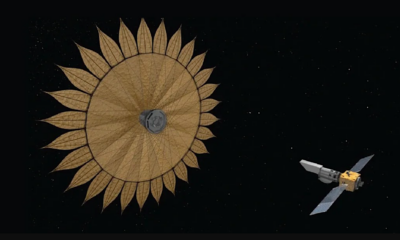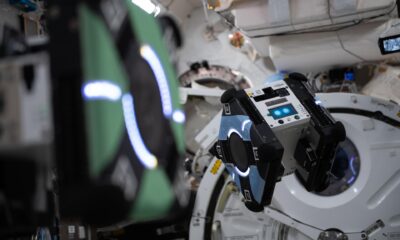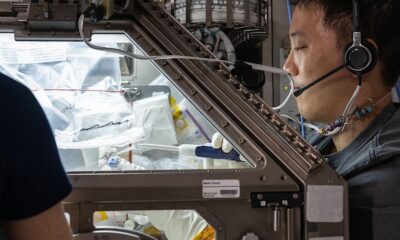Science
NASA’s Habitable Worlds Observatory Aims to Redefine Astrometry

NASA’s upcoming Habitable Worlds Observatory (HWO) seeks to transform astrometry, a foundational branch of astronomy, through enhanced precision in detecting Earth-like exoplanets and understanding dark matter. Utilizing a large-aperture telescope with a diameter of 6 to 8 meters, HWO will operate primarily in visible wavelengths, enabling scientists to identify rocky exoplanets within a distance of 10 parsecs and analyze their atmospheric conditions.
Recent advancements in astrometry, particularly through missions like Hipparcos and Gaia, have set new standards by mapping billions of stars with remarkable accuracy. Nevertheless, the quest for sub-microarcsecond precision remains vital for addressing challenges such as locating Earth-like exoplanets in habitable zones and investigating the effects of dark matter in galactic settings.
Innovative Astrometric Instrumentation
The proposed astrometric instrument on HWO aims to deliver diffraction-limited images across extensive fields, achieving a point-spread function (PSF) precision of 20 milliarcseconds. By integrating a sophisticated detector calibration system, the observatory will conduct high-precision astrometry, which includes detecting and measuring the orbits of Earth-mass planets around nearby solar-type stars.
A key feature of HWO’s instrument is its visible channel, which boasts a large CMOS-based focal plane made up of stitched pixel arrays. This design allows for a broad field of view, making it easier to capture celestial phenomena. The “Detector Calibration Unit” employs interferometric laser fringes to ensure pixel positions are accurately calibrated, enhancing the overall quality of the data collected.
Advancing Our Understanding of Dark Matter
Beyond exoplanet detection, the Habitable Worlds Observatory is poised to significantly advance research on dark matter. By studying stellar motions within galactic environments, HWO could provide critical insights that improve current constraints on the self-interaction cross-section of heavy dark matter particles, commonly referred to as WIMPs. Additionally, it aims to refine measurements regarding the masses of ultra-high dark matter particles.
The combination of differential astrometry and a stable telescope design facilitates extended integration times, which is vital for achieving the necessary sensitivity to detect exoplanets and conduct in-depth studies of dark matter. This innovative approach could mark a notable shift in our understanding of both planetary systems and the elusive nature of dark matter.
The ambitious project, led by scientists including Fabien Malbet from IPAG and numerous colleagues from various institutions, is set to be presented at a conference in Washington DC in July 2025. As the scientific community anticipates the launch of HWO, the potential for groundbreaking discoveries in astrobiology and cosmology remains a point of excitement and hope for future explorations in our universe.
For further details on this transformative initiative, the research can be referenced through arXiv:2510.18920 [astro-ph.IM].
-

 Technology5 months ago
Technology5 months agoDiscover the Top 10 Calorie Counting Apps of 2025
-

 Technology3 weeks ago
Technology3 weeks agoOpenAI to Implement Age Verification for ChatGPT by December 2025
-

 Health3 months ago
Health3 months agoBella Hadid Shares Health Update After Treatment for Lyme Disease
-

 Health4 months ago
Health4 months agoAnalysts Project Stronger Growth for Apple’s iPhone 17 Lineup
-

 Health4 months ago
Health4 months agoErin Bates Shares Recovery Update Following Sepsis Complications
-

 Technology5 months ago
Technology5 months agoDiscover How to Reverse Image Search Using ChatGPT Effortlessly
-

 Technology3 months ago
Technology3 months agoElectric Moto Influencer Surronster Arrested in Tijuana
-

 Technology5 months ago
Technology5 months agoMeta Initiates $60B AI Data Center Expansion, Starting in Ohio
-

 Technology2 months ago
Technology2 months agoDiscover 2025’s Top GPUs for Exceptional 4K Gaming Performance
-

 Technology5 months ago
Technology5 months agoRecovering a Suspended TikTok Account: A Step-by-Step Guide
-

 Health5 months ago
Health5 months agoTested: Rab Firewall Mountain Jacket Survives Harsh Conditions
-

 Lifestyle5 months ago
Lifestyle5 months agoBelton Family Reunites After Daughter Survives Hill Country Floods





















